Why Osteopathic Educators & Students Love Aquifer
“Aquifer cases simulate clinical reasoning, charging students with thinking like a doctor. Aquifer helps us provide consistency to our students. When we are reviewed for accreditation, we can say confidently that our students are gaining exposure to key conditions by completing Aquifer cases, even if they aren’t able to see those patients in the clinic. There’s really nothing else out there like this.”
– Erik Langenau, DO, MS, Philadelphia College of Osteopathic Medicine
“I appreciate the explanations and integrated questions within the cases! It also helps me go through differentials more efficiently as a future provider and understand why some differentials are less likely compared to others.”
-DO Student
“I really value the ability to learn medicine as a case unfolds. Often times on clerkships there is no time for teaching, or teaching is done at a different time than when the patient is fresh in your mind.”
– DO Student
” I love that students get different experiences depending on which hospital and which physician they rotate with. Aquifer allows for a more even playing field and has taught me things that I did not learn or didn’t pay attention to during my in-person rotations. Now I am more aware and more knowledgable.”
– DO Student
Supporting Osteopathic Medical Programs
With so much to cover in so little time, today’s osteopathic faculty members and deans need clinical learning tools they can trust.
Over 2/3 of osteopathic medical schools, 96% of US allopathic medical schools, and a growing number of PA, NP/DNP programs, and international medical schools trust Aquifer to standardize clinical experiences and develop clinical reasoning skills.
With 15 million virtual patient cases completed since our founding in 2006, Aquifer is the leader in developing clinical learning tools for medical and health professions education.
Talk to an Expert & Learn More
Our Proven Pedagogy
- Complete Encounters with Patients & Preceptors
- Realistic Clinical Experiences
- Written by Experts & Aligned with National Curricula
- Modeling Communication
- Embedded Self-Assessment Throughout Cases
- Just-In-Time Coverage of Clinical Excellence Topics
- Integration of Basic Science and Clinical Education
- Formative Assessment Tools build Self-Directed Learners
Complete Encounters with Patients & Preceptors
Aquifer cases walk students through all of the steps of a patient encounter.

Realistic Clinical Experiences
Cases include results of diagnostic testing, videos, audio, and images to provide a deep and realistic patient scenario.

Written by Experts & Aligned with National Curricula
Aquifer cases are written and maintained by the Aquifer Consortium of leading health professions educators, and developed to provide comprehensive coverage of national organization curriculum.

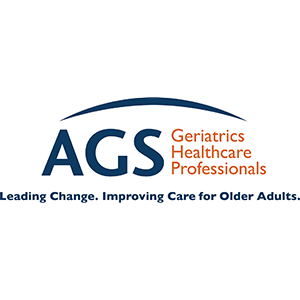
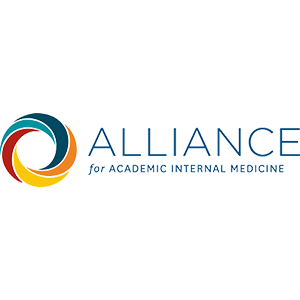


Modeling Communication
Each case includes detailed dialog that models effective communication with both patients and preceptors—an ideal way to prepare students for clinic.
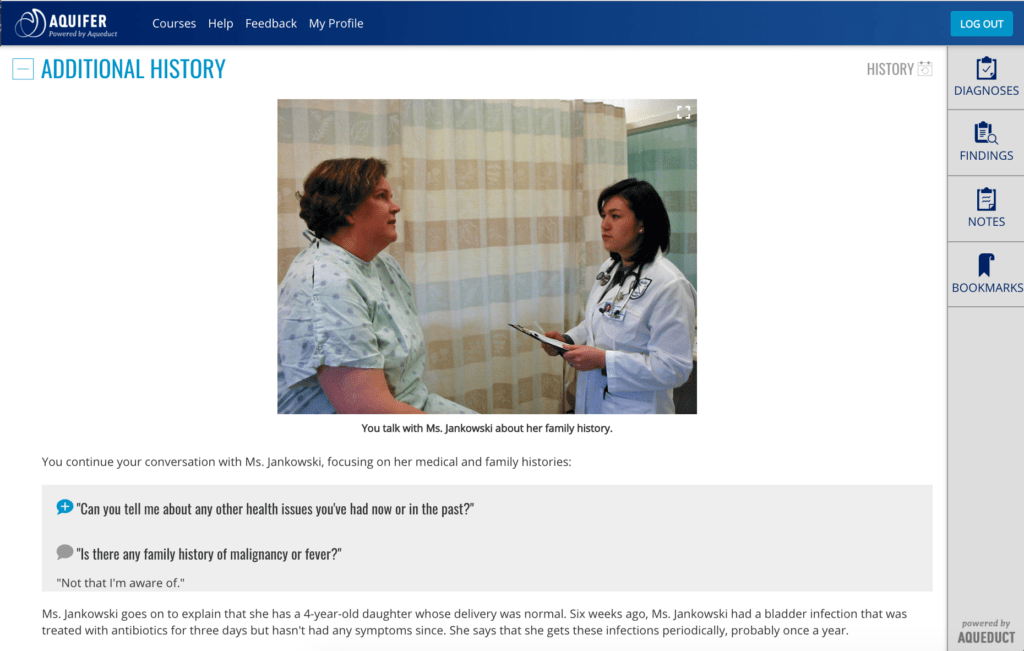
Embedded Self-Assessment Throughout Cases
Cases include built-in questions for self-assessment with detailed answer explanations, opportunities for students to practice writing summary statements, and additional self-assessment questions at the end to reinforce key concepts and extend learning beyond a single scenario.
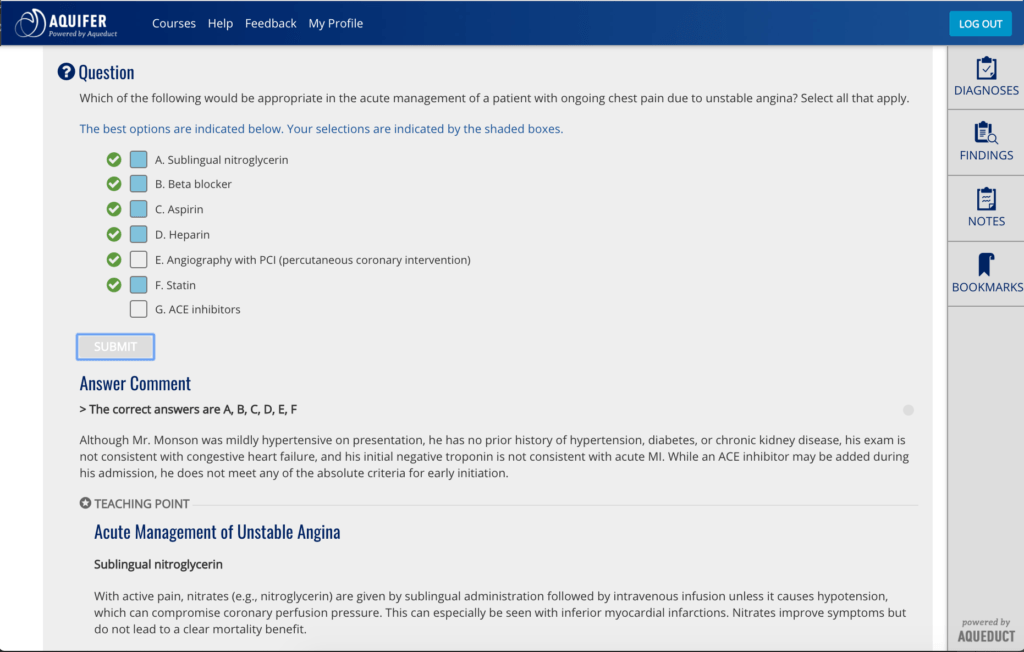
Just-In-Time Coverage of Clinical Excellence Topics
Brief, just-in-time coverage of Palliative Care, Trauma-Informed Care, Social Determinants of Health, High Value Care, Diagnostic Excellence and Telemedicine is included in select cases - a great way to ensure consistent coverage of these often orphaned topics without adding faculty time.
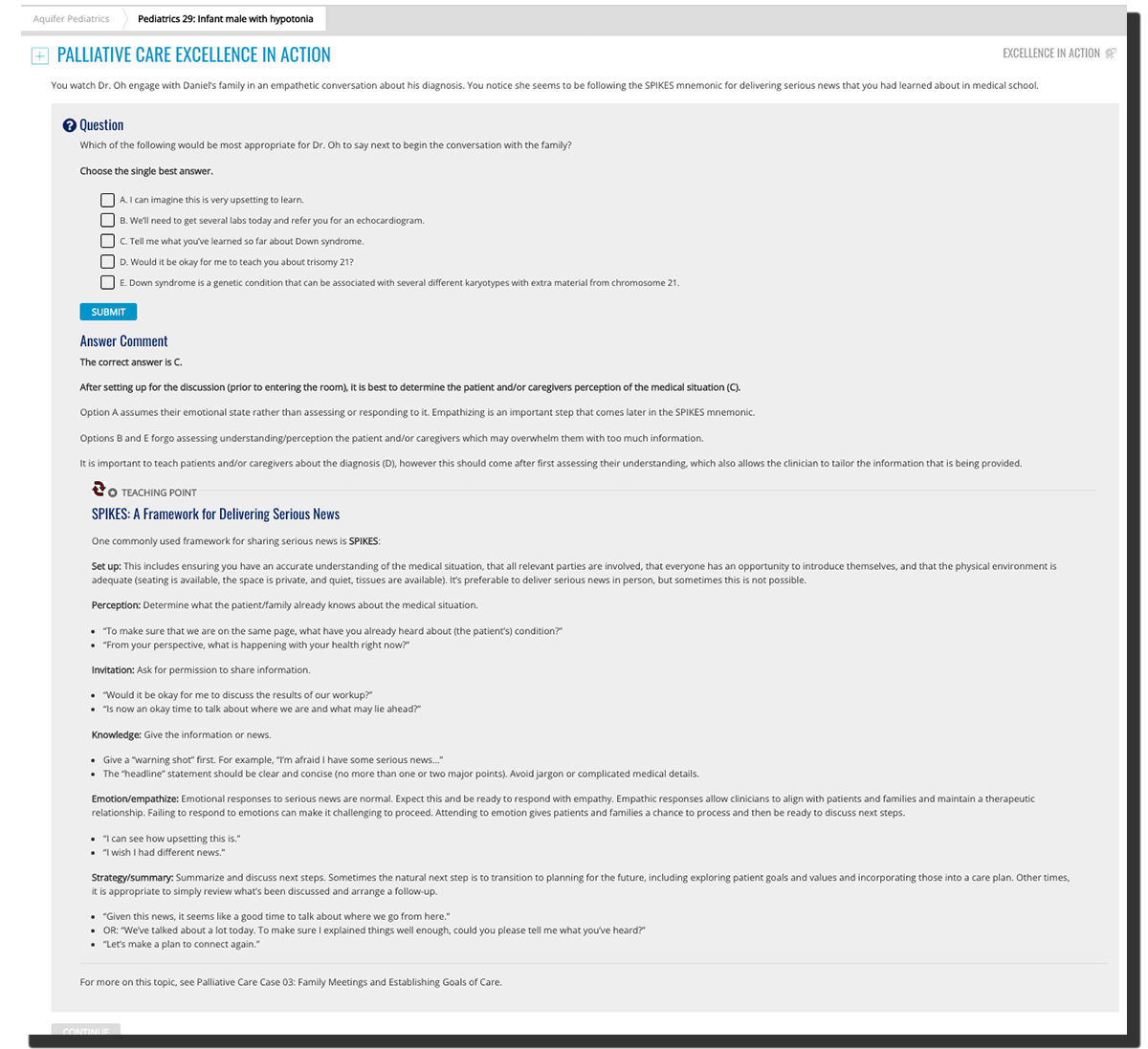
Formative Assessment Tools build Self-Directed Learners
Calibrate formative assessments for Family Medicine, Internal Medicine, Pediatrics and Radiology drive self-directed learning in clinical students, helping them build higher order thinking and problem solving skills, and provides a common tool and objective data to align students and faculty and leverage mid-clerkship feedback.
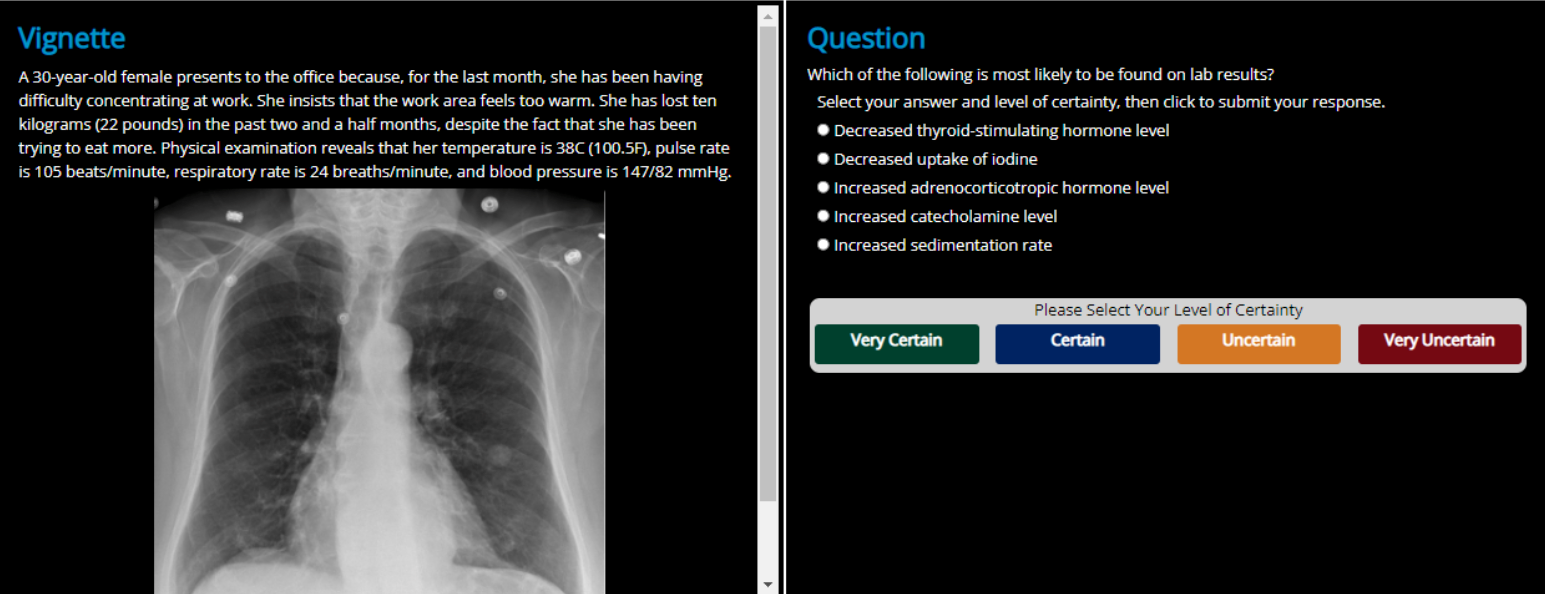
Osteopathic medical schools across the country are using Aquifer to:
Supplement clinical experiences
Fill gaps or enhance core rotations and electives
Hone clinical decision-making skills
Through realistic patient scenarios
Support accreditation requirements
Ensure coverage of key learning objectives
Remediate students with customizable tools
Easy to create individualized learning plans & target skills development
Provide faculty with trusted tools
Don’t reinvent the wheel! Improve efficiency with standard resources
Ensure consistent curriculum coverage
For all students, at every teaching site or campus
Meet the Consortium
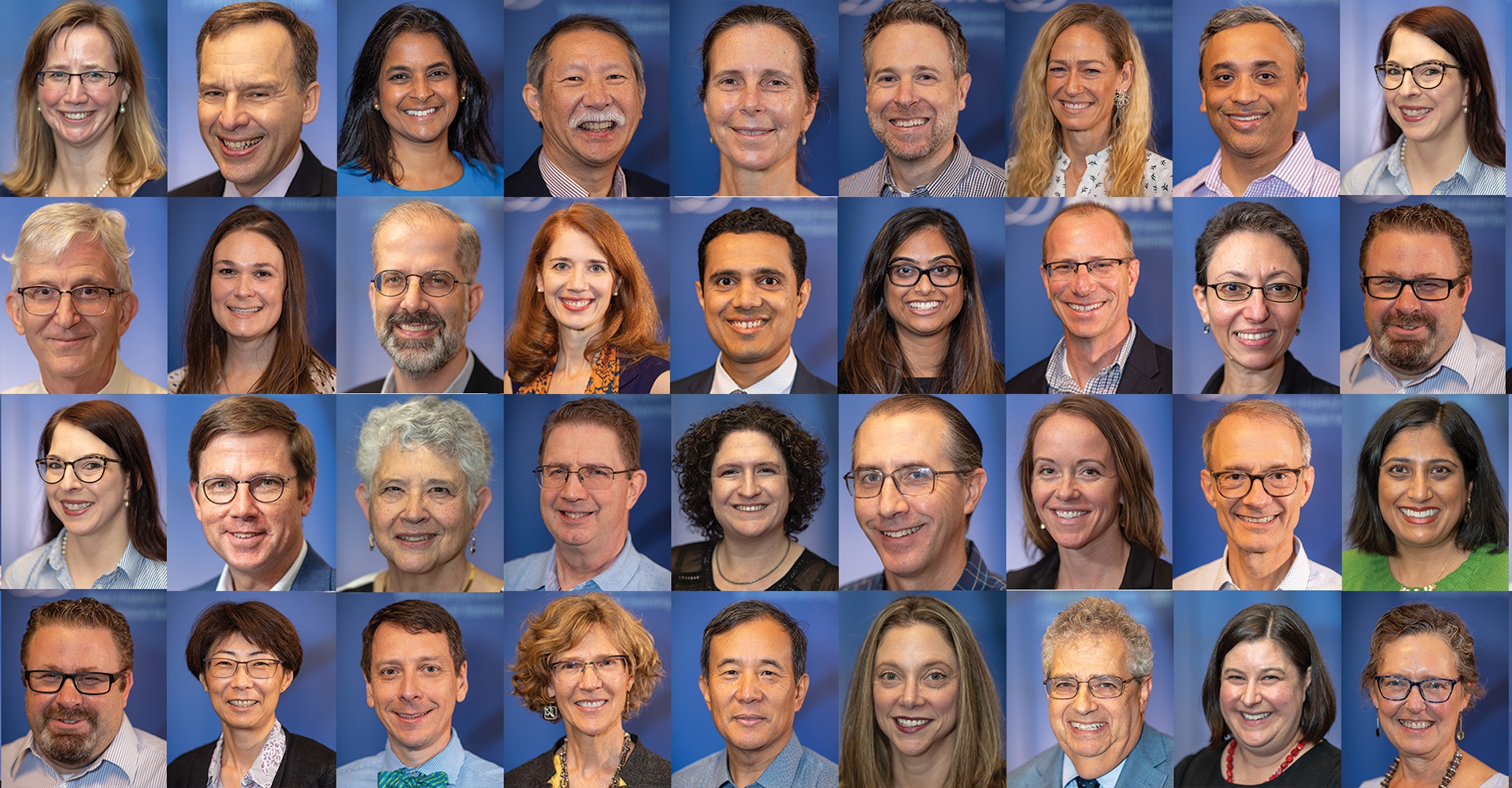
The Aquifer Educators Consortium forms the bedrock of Aquifer, bringing together more than 100 MD, DO, PA, and NP educators across disciplines—experts from the national leadership of organizations like AAIM, COMSEP, STFM, AGS, IAMSE, and AUR/AMSER—to collaborate, innovate, and make advances in health professions education.
Aquifer Delivers
Standardized clinical experiences
Evidence-based, peer-reviewed content
Access to expert medical educators
Coverage of national curricular standards
Easy to use platform with reporting
Our Subscribers
Aquifer serves faculty and students in a total of 349 subscribing programs across a range of health professions. Our subscribers include osteopathic medical schools, in addition to allopathic medical schools, nurse practitioner, physician assistant, and residency programs across the US and beyond.
Our current osteopathic subscribers include:
Alabama College of Osteopathic Medicine
Arizona College of Osteopathic Medicine at Midwestern University
Burrell College of Osteopathic Medicine
Campbell University Jerry M. Wallace School of Osteopathic Medicine
Chicago College of Osteopathic Medicine at Midwestern University
Des Moines University College of Osteopathic Medicine
Edward Via College of Osteopathic Medicine
Idaho College of Osteopathic Medicine
Liberty University College of Osteopathic Medicine
Michigan State University College of Osteopathic Medicine
New York Institute of Technology College of Osteopathic Medicine
Nova Southeastern University Dr. Kiran C. Patel College of Osteopathic Medicine
Philadelphia College of Osteopathic Medicine
Rowan University School of Osteopathic Medicine
Sam Houston State University College of Osteopathic Medicine
Touro College of Osteopathic Medicine New York
Touro University College of Osteopathic Medicine California and Nevada
University of New England College of Osteopathic Medicine
University of North Texas Health Science Center Texas College of Osteopathic Medicine
University of Pikeville Kentucky College of Osteopathic Medicine
University of the Incarnate Word School of Osteopathic Medicine
West Virginia School of Osteopathic Medicine
Western University of the Health Sciences College of Osteopathic Medicine of the Pacific
William Carey University College of Osteopathic Medicine



